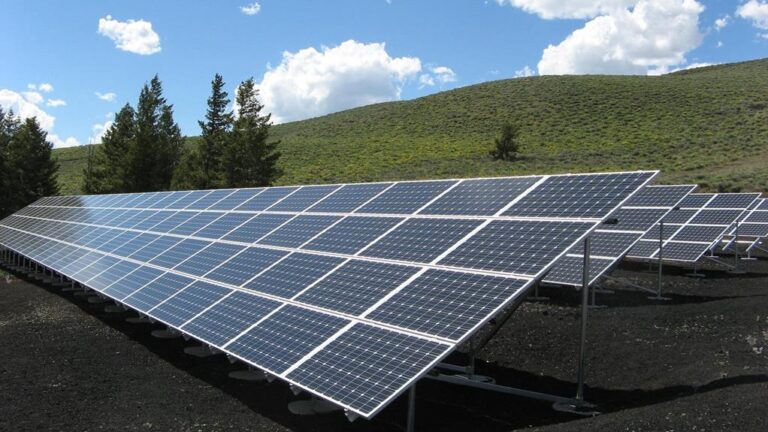9 Key Benefits of Sustainable Construction Methods
Did you know that sustainable construction methods can have a positive impact on our environment, health, and communities? In this article, we will explore the nine key benefits of implementing sustainable practices in construction.
From reducing environmental impact and energy consumption to improving indoor air quality and creating healthier living spaces, sustainable construction offers a multitude of advantages. Join us as we discover how these methods can contribute to a better and more sustainable future for all of us.
Reduced Environmental Impact
One of the key benefits of sustainable construction methods is that they significantly reduce our environmental impact. By implementing sustainable building techniques and eco-friendly construction practices, we’re able to minimize the negative effects on our surroundings. These methods focus on using renewable resources, reducing waste, and maximizing energy efficiency.
Sustainable construction techniques prioritize the use of environmentally friendly materials, such as recycled or locally sourced materials. This not only reduces the demand for virgin resources but also decreases the carbon footprint associated with transportation. Additionally, eco-friendly construction practices aim to minimize waste generation by promoting recycling and proper disposal methods.
Moreover, sustainable construction methods emphasize energy efficiency. This includes implementing energy-saving technologies, such as solar panels or efficient insulation, to reduce the consumption of non-renewable energy sources.
Lower Energy Consumption
When it comes to sustainable construction methods, lower energy consumption is one of the key benefits.
By implementing cost-effective energy solutions, such as installing energy-efficient lighting and HVAC systems, we can significantly reduce energy usage in buildings.
Additionally, using energy-efficient building materials, like insulation and windows, can further contribute to lowering energy consumption by reducing heat transfer and the need for excessive heating or cooling.
Cost-Effective Energy Solutions
We have found that implementing cost-effective energy solutions in sustainable construction methods significantly reduces energy consumption.
One of the key solutions is the use of solar power. By installing solar panels on buildings, we can harness the power of the sun to generate electricity, reducing our reliance on fossil fuels. Solar power is a renewable energy source, meaning it’s sustainable and can be used indefinitely.
Another important aspect of cost-effective energy solutions is the use of renewable materials. By using materials that are sourced sustainably and have a lower carbon footprint, we can reduce the energy required for manufacturing and construction processes. This not only helps to lower energy consumption but also promotes a more environmentally friendly approach to construction.
Environmental Impact Reduction
To reduce energy consumption and minimize environmental impact, our construction methods prioritize the implementation of sustainable practices. By incorporating energy efficient construction techniques and sustainable building practices, we can significantly reduce the amount of energy consumed during the construction and operation of buildings.
These methods include the use of renewable energy sources, such as solar panels and wind turbines, to generate electricity. Additionally, we focus on optimizing insulation and ventilation systems to minimize heat loss and maximize energy efficiency.
Energy-Efficient Building Materials
By prioritizing the use of energy-efficient building materials, we can further reduce energy consumption and promote sustainability in construction.
Energy-efficient design and sustainable construction methods are crucial in minimizing the environmental impact of buildings.
Energy-efficient building materials are designed to reduce the amount of energy needed for heating, cooling, and lighting, thereby reducing the overall energy consumption of a building. These materials include insulation with high thermal resistance, energy-efficient windows, and energy-efficient appliances.
By using these materials, buildings can be more energy-efficient, resulting in lower energy bills and reduced greenhouse gas emissions. Additionally, energy-efficient building materials can contribute to improved indoor air quality and occupant comfort.
It’s important for construction professionals and homeowners to prioritize the use of energy-efficient building materials to create more sustainable and environmentally friendly buildings.
Improved Indoor Air Quality
Through the use of sustainable construction methods, we can achieve improved indoor air quality. This not only benefits our health but also creates a more comfortable and pleasant living environment.
Here are four ways sustainable construction methods contribute to improved indoor air quality:
- Improved Ventilation Systems: Sustainable buildings are designed with advanced ventilation systems that continuously circulate fresh air, removing pollutants and allergens.
- Use of Eco-Friendly Building Materials: Sustainable construction methods prioritize the use of eco-friendly building materials that emit fewer toxins, reducing the presence of harmful chemicals in the air.
- Enhanced Air Filtration: Sustainable buildings are equipped with high-quality air filtration systems that effectively capture and remove particles, dust, and other pollutants.
- Reduction of Indoor Pollutants: Sustainable construction methods aim to minimize the use of materials and products that release harmful pollutants, such as volatile organic compounds (VOCs), ensuring cleaner indoor air.
Minimized Waste Generation
We frequently minimize waste generation through sustainable construction methods. Waste reduction is an important aspect of sustainable practices in the construction industry. By implementing efficient strategies, we can significantly decrease the amount of waste produced during construction projects.
One way to achieve this is by using prefabricated components or modular construction, which reduces the amount of on-site waste generated. Additionally, recycling and reusing materials can help minimize waste by diverting materials from landfills. Proper planning and design can also contribute to waste reduction by optimizing material usage and reducing excess.
Sustainable construction methods not only benefit the environment but also promote cost savings and resource efficiency. By incorporating waste reduction practices into construction projects, we can contribute to a more sustainable and responsible industry.
Enhanced Resource Efficiency
Enhanced resource efficiency in sustainable construction methods offers several key benefits.
First, it allows for cost savings through improved efficiency in the use of materials, energy, and water, reducing overall project expenses.
Secondly, it helps to minimize the environmental impact by reducing the extraction of natural resources and the generation of waste.
Lastly, it promotes long-term resource preservation, ensuring that future generations can enjoy the same access to essential resources.
Cost Savings Through Efficiency
Efficiency in resource utilization leads to significant cost savings in sustainable construction methods. By implementing cost-effective construction practices and streamlined building processes, we can optimize resource usage and reduce wastage, resulting in financial benefits.
Here are four ways in which efficiency can contribute to cost savings in sustainable construction:
- Minimizing material waste: Through careful planning and proper material management, we can reduce the amount of construction waste produced, saving both money and valuable resources.
- Energy-efficient systems: Installing energy-saving technologies, such as solar panels and LED lighting, can lower operational costs by reducing energy consumption.
- Water conservation: Implementing water-saving measures, like rainwater harvesting and efficient irrigation systems, can lower water bills and promote sustainable water usage.
- Improved project management: By optimizing construction schedules, coordinating tasks, and reducing delays, we can save on labor costs and complete projects more efficiently.
Reduced Environmental Impact
The reduced environmental impact of sustainable construction methods is achieved through enhanced resource efficiency. Energy efficient design and sustainable construction techniques play a vital role in minimizing the negative effects of construction on the environment. By incorporating energy efficient design principles, such as optimizing insulation, using renewable energy sources, and implementing efficient lighting systems, buildings can significantly reduce their energy consumption and greenhouse gas emissions.
Sustainable construction techniques, such as using recycled materials, implementing water conservation measures, and reducing construction waste, further contribute to the reduced environmental impact. These practices not only minimize the depletion of natural resources but also help in preserving the ecological balance.
Long-Term Resource Preservation
To achieve long-term resource preservation in sustainable construction, we prioritize the efficient utilization of materials and resources. By implementing sustainable building practices, we can significantly contribute to resource conservation. Here are four ways in which sustainable construction methods enhance resource efficiency:
- Material Recycling: We promote the use of recycled materials in construction, reducing the demand for new resources and minimizing waste generation.
- Energy-Efficient Systems: Sustainable buildings incorporate energy-efficient technologies, such as solar panels and insulation, reducing the consumption of non-renewable energy sources.
- Water Conservation: By implementing water-efficient fixtures and systems, we reduce water consumption and preserve this precious resource.
- Waste Management: Sustainable construction practices prioritize waste reduction, recycling, and proper disposal, minimizing the environmental impact of construction activities.
Through these measures, we can ensure the long-term preservation of resources while creating environmentally-friendly structures that foster a sense of belonging to a sustainable community.
Increased Durability and Longevity
By implementing sustainable construction methods, we can achieve increased durability and longevity in our projects. Sustainable construction focuses on using materials and practices that are environmentally friendly and promote long-term sustainability. This means using renewable resources, minimizing waste, and reducing energy consumption.
These methods result in buildings that are built to last, with materials that are resistant to wear and tear. For example, using recycled materials such as reclaimed wood or recycled steel can enhance the durability of a structure. Additionally, sustainable construction practices often involve incorporating energy-efficient features like insulation and solar panels, which can further prolong the lifespan of a building.
Healthier Living Spaces
Implementing sustainable construction methods leads to the creation of healthier living spaces through the use of environmentally friendly materials and practices. Here are four ways in which smart design and sustainable materials contribute to a healthier living environment:
- Improved Indoor Air Quality: Sustainable materials such as low VOC paints and formaldehyde-free insulation reduce harmful emissions, promoting cleaner and fresher indoor air.
- Thermal Comfort: Smart design techniques, including proper insulation and energy-efficient windows, help maintain a comfortable temperature indoors, reducing the need for excessive heating or cooling.
- Noise Reduction: Sustainable construction methods incorporate soundproofing materials, reducing noise transmission from outside and between different areas of the building, creating a peaceful living environment.
- Natural Light and Ventilation: Utilizing smart design strategies, sustainable buildings maximize natural light and airflow, reducing the reliance on artificial lighting and mechanical ventilation systems, and enhancing the overall well-being of occupants.
Cost Savings
As we consider the benefits of sustainable construction methods, it’s important to explore the cost savings that can be achieved.
One major way in which sustainable construction methods can lead to cost savings is through energy efficient design. By incorporating energy efficient features such as solar panels, insulation, and efficient HVAC systems, buildings can significantly reduce their energy consumption and, consequently, their energy bills.
Additionally, sustainable construction methods often prioritize the use of sustainable materials, which can also contribute to cost savings. Sustainable materials are often more durable and require less maintenance and replacement, resulting in long-term cost savings for building owners.
Positive Community Impact
One way sustainable construction methods can have a positive community impact is through the creation of healthier living environments. These methods not only benefit individuals, but also contribute to economic development and social benefits for the community as a whole.
Here are four ways in which sustainable construction practices can have a positive community impact:
- Improved air quality: Sustainable construction focuses on using materials and techniques that minimize the release of harmful pollutants, leading to cleaner and healthier air for the community.
- Reduced energy consumption: Sustainable buildings are designed to be energy-efficient, reducing the overall energy demand of the community and promoting the use of renewable energy sources.
- Enhanced water management: Sustainable construction methods incorporate water conservation techniques such as rainwater harvesting and greywater recycling, reducing the strain on local water resources and promoting water sustainability.
- Increased community engagement: Sustainable construction projects often involve collaboration with local communities, providing opportunities for employment, skills development, and fostering a sense of belonging and pride in the community.
Conclusion
Sustainable construction methods offer a multitude of benefits that can’t be ignored. From reducing environmental impact to improving indoor air quality, these methods provide healthier living spaces while also saving costs.
By embracing sustainable practices, we can create a positive community impact and ensure a more sustainable future. So let’s choose sustainability and build a better world for ourselves and future generations.







One Comment
Comments are closed.